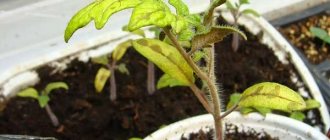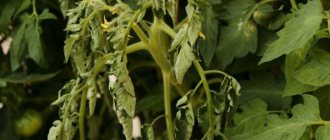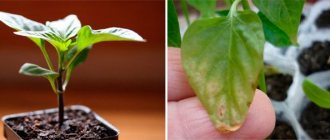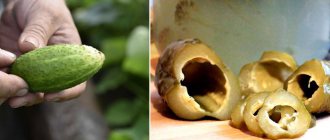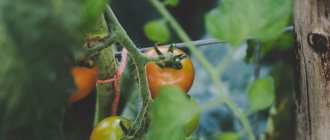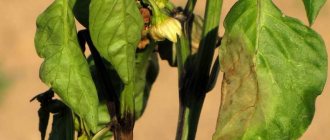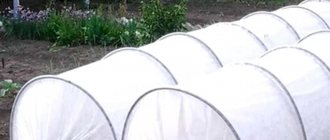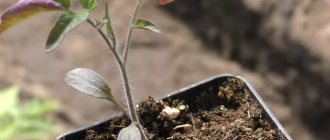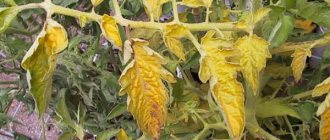Author's rating
Author of the article
Yakov Pavlovich
Professor, Head of the Department of Vegetable Growing
Articles written
153
Cucumbers can be sown with seeds directly into open ground, but if you want to get an early harvest, gardeners resort to growing seedlings. What to do when suddenly seemingly strong cucumber seedlings wither and fall, why this happens, what is the reason for such a misfortune, this question cannot but worry summer residents and vegetable growers. Most likely, care was not organized correctly, and diseases and pest attacks are also possible.
Lighting
Plants need light for photosynthesis; without it, plants weaken and disappear. In February and March, when seeds are planted for seedlings, daylight hours are still short; this may not be enough for cucumbers.
Signs that there is not enough light and there is a risk that the seedlings may die:
- the plants turned pale;
- no true leaves, only cotyledons;
- the stems stretched and weakened;
- the seedlings fell towards the light source.
To solve this problem, cucumber seedlings need to be illuminated in the morning and evening. The most convenient way to do this is with special phytolamps; you need to keep the boxes with seedlings under them for about four hours a day. In total, plants need 12-16 hours of daylight. When the seedlings have already grown, you cannot sharply increase the period of illumination; you need to accustom the sprouts to lamps gradually. If it is not possible to purchase such equipment, ordinary fluorescent or aquarium lamps will do. In this case, the dark period of the day should be at least 6 hours. It should be remembered that direct sunlight is dangerous for seedlings; they can cause burns on delicate leaves. Therefore, when placing seedlings in boxes, you need to provide them with diffused light.
Preventive actions
Prevention includes the use of both store-bought drugs and formulations made according to folk recipes.
As a preventive measure, it is useful to spray the tops with a weak solution of potassium permanganate, and treat the lower leaves with Fitosporin and Trichodermin.
Failure to comply with transplant deadlines
Seedlings can be replanted when three or four true leaves have appeared. An earlier transplant will inevitably lead to wilting, which can cause the death of plants. Cucumbers can be transplanted into a greenhouse in May, and into open ground in June. The soil should warm up to a temperature of about + 16°C. If more than four weeks pass from the moment of sowing the seeds to transplantation, the survival rate is significantly reduced.
How to prepare the ground
What to do if cucumber seedlings stretch out
If the seedlings will grow in a greenhouse, they need to be prepared in advance. In the fall, the soil is cleared of debris, or it is better to remove the top layer and add new soil. If this is not possible, treat the beds with Hyokladin solution. The soil is immediately fertilized and dug up.
On a note! Green manure has a good effect on the soil composition. They can be sown in advance to enrich the soil.
Be sure to treat the frames with a solution of bleach at the rate of 400 g per 1 liter of water. Iron parts are painted with water-based paint, and wooden parts with vitriol.
For complete disinfection, fumigation is carried out. You can simply make a fire and carefully close the windows and doors, or set fire to lumps of sulfur mixed with kerosene in special containers. This is done at a temperature no higher than 18°C.
To protect plants from harmful microorganisms and fungi, the soil is treated with Fitosporin before planting seedlings.
Before planting cucumbers, check whether the earth has warmed up and whether there is enough organic matter in the soil, then the seedlings will take root well and will not disappear.
Note! Cucumbers do not grow in acidic soils. The optimal pH level for this crop is 7.
But even on alkaline soils, cucumbers will get sick. If it is not possible to take measurements, pay attention to weeds. Woodlice, horse sorrel, mint, bearberry, and moss grow on acidic soils. Such soil needs deoxidation or liming. Neutral soil is suitable for cucumbers, on which yarrow, wormwood, quinoa, nettle, clover, and brome grow.
Cucumbers are regularly fed and treated with special means to prevent diseases.
During further cultivation of cucumbers in the greenhouse, the temperature is maintained at 19 - 26 °C.
For bee-pollinated varieties, means of attracting insects are used.
The seedlings are regularly ventilated and, if necessary, shaded.
The fruits are collected regularly, otherwise the leaves will wither.
Improper watering
The soil in the container should always be slightly moist. Under no circumstances should you use cold water; watering should be done with warm, settled water, or even better, melted water. If there is a lack of moisture, the plants' stems dry out and the leaves turn yellow. Water as soon as the top layer of soil becomes noticeably dry. If the air humidity in the room is sufficient, water the cucumbers twice a week. Small seedlings should not be watered at the root; you need to carefully moisten the soil, while trying to prevent water from getting on the leaves; it is convenient to do this with a small spoon. Mature seedlings are carefully loosened after watering.
See also How to plant and grow cucumbers in five-liter plastic bottles
Prevention of foliage wilting
To avoid wilting of cucumber foliage, you need to follow a few simple rules.
- Maintain crop rotation. Do not plant cucumbers in the same place every year. The distance between plants (at least 50 cm) when planting is also important. The vegetable must be planted after a good predecessor.
- It is necessary to grow cucumbers in a specially prepared warm stationary or mobile bed. Don't forget about mulching and heat accumulators.
- Do not use herbicides.
- Carry out preventive spraying with antifungal drugs.
Grow cucumbers taking into account their needs, and they will delight you with both appearance and harvests until the cold weather!
Excess or lack of fertilizers
If the balance of nutrients in the soil is disturbed, seedlings can become thin. If the necessary microelements are not enough, the leaves change color, become stained, the stem dries out, and growth is impaired.
For the first feeding, cucumbers need nitrogen, phosphorus, and potassium. Complex fertilizer Superphosphate will not allow the seedlings to stretch out, will help strengthen and thicken the stems, which means the seedlings will not fall or wither.
Expert opinion
Stanislav Pavlovich
Gardener with 17 years of experience and our expert
Ask a Question
The next feeding is carried out two weeks after the appearance of the second true leaf. Here, too, substances such as potassium, nitrogen, and phosphorus will be needed. Ready-made fertilizer, for example, Kemira, is suitable.
Why leaves on adult cucumbers wither: main reasons
If the leaves of cucumbers become limp, you need to immediately identify the cause and begin to eliminate it so as not to lose the harvest. Errors in watering, nutrient deficiencies, poor planting location, infections or attacks by parasitic insects, and growing next to crops whose growing conditions vary markedly are the most common causes of plant wilting. Let's look at them in more detail.
Incorrect watering
Proper watering is the key to plant health. Common gardening mistakes include:
- Insufficient watering reduces foliage turgor and leaves turn yellow.
- If the soil is too wet, root respiration becomes difficult, creating favorable conditions for the growth of pathogenic fungi.
- Using cold water provokes the development of root fungal infections.
Read the article about why cucumbers turn yellow when grown in a greenhouse.
Undernutrition or overnutrition
Cucumbers respond with great gratitude to feeding. A properly balanced soil composition is the key to a rich harvest. For normal growth and development, plantings require nitrogen, potassium, phosphorus and other microelements, which may be too little in the soil. But not only the deficiency of nutrients, but also their excess affects plantings. In both cases, the process of leaf withering progresses, new ones appear rarely and grow poorly, and the stem dries out.
Nitrogen is necessary for the active growth of the cucumber bush. Its deficiency affects the vegetation of the plant. Growth slows down, the foliage turns pale and dries out.
If there is too little potassium in the soil, this can be determined by the leaf blade curling down and dark spots appearing along its edges, similar to burns. If there is too much potassium in the garden bed, then the color of the bush begins to fade, and it becomes covered with spots.
Phosphorus deficiency can be recognized by the leaves curling upward, and its excess is manifested in too rapid aging of the bush, on which necrotic spots appear.
The lack of minerals can be easily corrected by feeding. Their increased number can be reduced by abundant watering at the rate of 1.5 buckets per square meter.
Read the article about how to feed cucumbers in a greenhouse for growth and fruiting.
Wrong landing site
Most often, gardeners make one of two common mistakes:
- Seedlings are planted in bright sun, which leads to dehydration of the plant.
- The growing area is too shaded. This is often observed due to close planting of other plants.
Infection or pest damage
If you do not take the necessary protective measures, diseases can destroy the plant in a fairly short period of time:
- Fungal diseases: Root rot - externally manifested by drying out first of old leaves, and then of young ones.
- Tracheomycoses (tracheomycosis wilts) - these include Fusarium (Fusarium) and Verticillium wilts, which are caused by the fungi Fusarium and Verticillium, respectively.
- White rot - pathology can be suspected by soft falling leaves (tops) and brown basal spots located on the stem.
Read the article about all cucumber diseases and methods of treating them.
- Insect pests: Melon aphid - lays eggs on the underside of leaf blades;
- Spider mite - a typical sign of its invasion are cobwebs, visually visible on the back of the leaves.
Note! If the cucumber suddenly begins to wither already during fruiting (for example, in June or July), the reason is probably fusarium. How can I check this? Make a longitudinal and transverse section of the stem of the affected bush; if you see that the color changes from green to white or yellow-brown, it is Fusarium wilt.
Exposure to chemicals
Cucumber crop is very sensitive to herbicides. The sedimentation of the substance on the foliage often leads to its wilting.
Wrong choice of "neighbors"
Pumpkin plants do not tolerate proximity to tomatoes due to differences in the conditions necessary for the normal growing season of both types of crops.
Read about how to make a greenhouse and greenhouse (from polycarbonate and other materials) for cucumbers with your own hands.
Root damage
If the seedlings droop after planting, the roots may have been damaged. Cucumbers do not tolerate picking well, so it is better to sow the seeds in separate peat cups or tablets; this method will reduce the risk of injury to the roots in the garden. But some gardeners note that at the same time, the percentage of blackleg disease is higher. In this connection, many people prefer to use plastic cups; then, when transplanting, the seedlings are taken out of the container with a lump of earth around the roots, and before that they are watered abundantly.
What diseases cause cucumber seedlings to wither?
Proper care does not fully guarantee that your cucumbers will not be subject to disease. Very often, plantings become easy prey for various microorganisms. They can affect both adult bushes and young seedlings. As a result, the plant begins to wither. The presence of infection can be determined by external signs that every gardener should know.
No region is immune from sudden changes in temperature. It is this factor that often causes the appearance of powdery mildew. Sometimes watering plants with cold water can activate its appearance. The first and most obvious sign of the disease is the appearance of a white coating on the leaves, after which they begin to fall off, the stems become thinner and wither. Therefore, carefully monitor whether your seedlings are well protected from drafts and temperature changes. Water young plantings only with settled water that has been naturally heated. If the disease still has time to manifest itself, then the cucumbers can be treated with Topaz, Hom or Quadris.
From rhizoctinia, late blight, scab
From late blight, alternaria, gray rot
Violation of watering rules and temperature fluctuations can lead to another disease - downy mildew. Its symptoms are small yellow spots that appear on the leaves. Gradually their size increases, and the reverse side of the leaf plate becomes covered with a gray coating. First of all, the leaves wither and fall off, and then the entire bush dies. To combat the infection, it is necessary to treat the seedlings with Bordeaux mixture or Ordan, Kuproskat or Ridomil.
Downy mildew From late blight From altarnaria From late blight
Using large amounts of cold water for irrigation can lead to the development of fusarium. Initially, it affects the root system of cucumbers, as a result of which all vegetative parts of the bush begin to dry out and rot. Phytocide and Trichodermin will help in the fight against the disease.
Fusarium
Often the cause of death of seedlings is sclerotinia. Areas of fluffy mold of a light gray hue begin to appear on parts of the bush. Then the leaves and stem become covered with dark spots, and the plantings die. The drug Fitosporin M will help overcome the disease.
White cobwebby mycelium of the fungus with numerous sclerotia on the affected stem
From late blight, from scab
Very often, cucumbers get sick due to fungi. One of the most common diseases of this type is “black leg”. Popularly, it got its name due to the fact that the disease manifests itself in the form of blackening of the base of the stem of cucumbers. The fungus spreads very quickly, so measures to destroy it must be taken as early as possible. If the affected area is not yet too large and the bush is alive, then the damaged area can be treated with a solution of potassium permanganate. You should also reduce the volume and frequency of watering and mulch. Specialized products include Fitolavin, Baktofit or Fitosporin.
Blackleg
From rhizoctoniosis of the Colorado potato beetle and wireworm
Many insect pests that prefer to feed on plant sap can also provoke wilting of a bush. Cucumbers become tasty prey for melon aphids, spider mites, sprout flies or whiteflies. Most often, they lay larvae on the back side of the leaf, so plants must be treated carefully, spraying or wiping each infected leaf blade.
Sprout fly
Spider mite
Whitefly
Aphid
In cases where watering is carried out too often and abundantly, rot may appear in the root system. It is difficult to determine its presence externally; it manifests itself in a deterioration in the appearance of the plantings, the stem becomes thin, the leaves become limp. As a result, the bush dies completely because the stem breaks. Stopping watering, eliminating monotonous fertilizing, and adding sand and wood ash to the soil will help correct the situation.
Sometimes diseases spread so quickly that no means of control help. In this case, it is better to plant new seedlings and pre-disinfect the used seeds to strengthen the immune system. Infected seedlings must be dug up and burned. If several bushes are sick, then they need to be transplanted from healthy cucumbers and monitor the dynamics of recovery.
Temperature
If the seedlings have wilted, you need to check whether the ambient temperature is suitable. For seeds to germinate, a temperature of +25°C...28°C is needed, and when shoots appear, it is necessary to maintain it in the area of + 20°C...+ 23°C. At night, the thermometer should not fall below + 18°C. Changes of more than 7°C are unacceptable. Violation of the temperature regime in a greenhouse leads to stretching, yellowing, wilting, disease and, as a result, death. If the seedlings wither after planting in open ground, then perhaps the cause was night frosts. To prevent this, seedlings must be covered for the first time.
Tips and tricks for gardeners and gardeners
Sergey, 40 years old: “I have been growing cucumbers on my summer cottage for many years, but just recently I encountered withering of the seedlings. It turned out that the cucumbers began to fade due to the development of a black leg. For a long time I didn’t know what to do about it and how to save the harvest. However, then I decided to spray all the infected bushes with fungicides and I can say that it helped me. Of course, the harvest was small, but we managed to save the seedlings.”
Lyudmila, 50 years old: “Last year I decided to plant some cucumbers for the first time and immediately ran into problems. All seedlings were sluggish and practically did not grow. I decided to carefully examine the plants and found melon aphids on them. I immediately sprayed the bushes with insecticides, and the next day there was no trace of the pests left.”
Infections
Fungal infections such as fusarium or root rot can also cause seedlings to fall. Their development is facilitated by:
- excessive watering;
- high ambient humidity;
- lack of drainage;
- sudden changes in temperature;
- contaminated soil or seeds.
For prevention, soil and seeds are disinfected before planting using a solution of potassium permanganate. In addition, they can be calcined at a temperature of + 60°C using an oven. After watering the seedlings, the soil must be carefully loosened to ensure oxygen access. If the seedlings are already sick, they are treated with biofungicides or chemicals. At the initial stage, the plants can still be restored. In case of severe damage, it is advisable to destroy the seedlings.
Expert opinion
Stanislav Pavlovich
Gardener with 17 years of experience and our expert
Ask a Question
Another fungal infection, Blackleg, can also lead to the death of entire seedlings. At the first signs, the seedlings are treated with Fitosporin and watering is reduced.
Why do cucumber seedlings wither?
Gardening practice shows that seedlings wilt most often due to insufficient insolation. An effective method to solve the problem is to choose a suitable location.
Deviations in the timing of transplantation can also negatively affect the growth of seedlings and the turgor of green mass:
- if the deadlines are ahead, the seedlings are unable to withstand the action of external factors;
- when planting with a delay, there is a greater chance of damaging the roots.
The third and fourth reasons include watering errors and too dense planting, in which neighboring seedlings begin to compete with each other for light and nutrients as the growing season progresses.
An excess or deficiency of micro- and macroelements can lead to disruption of the metabolism of the cucumber plant.
Many gardeners forget to weed their beds to remove weeds, the presence of which negatively affects the growing season of seedlings.
Less common reasons why cucumbers wither and die are fungal diseases, infrequent ventilation or drafts, low temperatures at night and attacks by insect pests.
Read the article about what to do if the ovaries or leaves of cucumbers dry out and fall off, including drying out at the edges.
Yellow veins of leaves
The appearance of yellowness on the veins of the leaves is associated with infection of the plant; the carrier of the virus is the tobacco whitefly . After 30-35 minutes of feeding on an infected plant, an adult whitefly becomes a carrier of the virus.
The causative agent of the virus most often persists in plants of the pumpkin family. With subsequent feedings of the pest, the infection is transmitted to healthy plants.
Varieties and hybrids of cucumbers pollinated by bees are affected without showing external symptoms. But parthenocarpic (self-pollinating) varieties are most severely affected . It manifests itself in the form of a sharp decrease in yield, the period of active fruiting is shortened. Virus infection can lead to plant death.
Virus protection
effective protective . Prevention of infection is the cultivation of infection-resistant hybrids. For example, Ghazal F1, Rhythm F1.
Useful materials
Explore other useful articles about cucumber seedlings:
- How to properly grow on a windowsill, balcony and even in the basement?
- Tips for growing in various containers, in particular peat pots and tablets.
- Find out the planting dates depending on the region.
- Reasons why seedlings stretch?
